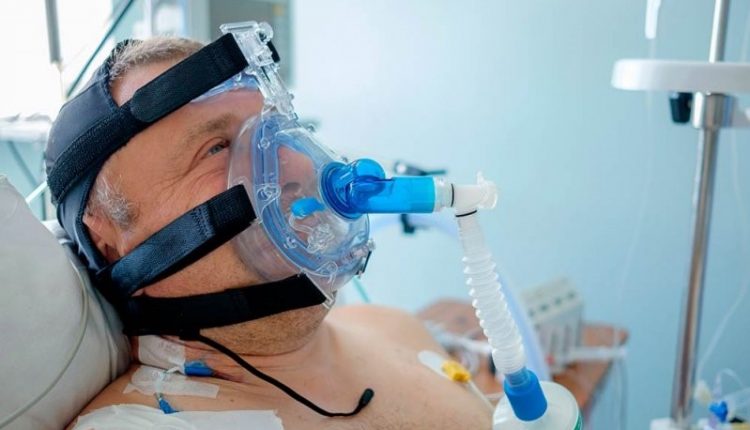
Respiratory assessment in elderly patients: factors to avoid respiratory emergencies
Geriatric patients are more likely to experience respiratory emergencies such as pneumonia, aspiration, and severe respiratory infections
A range of physiological changes, including muscle atrophy, can make airway assessment and management more difficult
This is why morbidities related to suction and airway management are more common in this population.
Proper respiratory assessment is critical for informing treatment and can greatly reduce the risk of complications.
STRETCHERS, LUNG VENTILATORS, EVACUATION CHAIRS: SPENCER PRODUCTS ON DOUBLE BOOTH AT EMERGENCY EXPO
Elderly Emergency Management: Airway First
About 80% of seniors have at least one chronic illness.
Many of these illnesses—pulmonary disease, cardiovascular disorders, and chest injuries, to name a few—directly affect the airway.
This means that in any emergency involving a geriatric patient, respiratory assessment is vital to a their well-being.
In younger patients, consciousness is a straightforward matter. In elderly patients, dementia, nervous system injuries, and circulatory disorders can make a patient seem confused despite being fully conscious.
This can complicate the initial assessment, and warrants seeking information from secondary sources, such as nearby family, if possible.
Always be alert to the possibility that a patient has a pacemaker.
Respiratory Assessment in Geriatric Patients
Respiratory assessment in geriatric patients should follow the usual protocols, including looking for the standard signs of a blocked airway.
Patients may need suction when:
- Oxygen saturation drops on a pulse oximeter.
- There is a clear obstruction in the airway.
- The patient is hoarse, has a barking cough, or is unable to clear their own airway.
- There is a suspected obstruction, or the patient requests suction.
Before beginning suction, it’s critical to visualize the airway.
As with all patients, you must be able to see what you are doing.
Special considerations for geriatric populations include:
- Looking for broken or missing teeth, which can make obtaining a seal more difficult
- A rigid neck and less muscle tone
- Dementia that impedes communication, increases combativeness, and potentially causes panic
- Bridges, dentures, and other oral hardware that may break loose and obstruct the airway
Special Considerations for Airway Suction in Elderly Patients
Elderly patients have a right to sensitive care and explanations that make sense to them.
Don’t make the mistake of assuming that an older person can’t understand or consent to treatment.
Instead, speak to them in a respectful tone.
Encourage them to talk about their concerns if they are able.
Then, explain to them the purposes of suction.
Many of the same skills used in pediatric patients can work well in elderly patients with dementia.
The key is to remain calm and compassionate—don’t be aggressive or forceful.
Airway suction in elderly patients is not technically different from that for other patients.
Select a catheter approximately half the size of the internal diameter of the endotracheal tube for optimal suction, and limit suction to about seven seconds.
The key difference when suctioning elderly populations is that it is important to remain attuned to potential complications.
Be mindful of the following:
- Decreased airway lubrication and muscle tone, increasing the risk of laryngeal and other injuries
- That endotracheal intubation may result in a transient hypertensive and tachycardic response, especially when multiple attempts are needed.
- Age-related changes to the intervertebral discs means limitations in the movement of the neck and back. This includes a decrease in the diameter of the nucleus pulposus, an increase in hydrostatic pressure within the annulus, and a narrowing of the intervertebral space. This results in difficult intubation.
By following protocols, remaining sensitive to patient concerns, and carefully monitoring each patient, you can greatly reduce the risk of injuries and increase the potential of successful treatment.
Training and Equipment Issues in Elderly Patients
It’s easy to develop a list of special concerns faced by elderly patients.
What’s harder is providing exceptional care in stressful, high-stakes situations.
Patients may be angry or panicked.
Others may have family who intrude upon the assessment or otherwise make the situation more difficult.
No textbook can possibly prepare an EMS professional for the challenging realities that real patients present.
This is why preparation is so important.
Your team must rehearse and drill real-world scenarios, ideally in high-stress environments.
It’s equally important to select the right portable suction unit.
Portable suction offers easier access to care, saves time, and ensures you can carry a suction unit in your tactical medical bag.
Read Also:
Emergency Live Even More…Live: Download The New Free App Of Your Newspaper For IOS And Android
Obstructive Sleep Apnoea: What It Is And How To Treat It
Obstructive Sleep Apnoea: Symptoms And Treatment For Obstructive Sleep Apnoea
Our respiratory system: a virtual tour inside our body
Tracheostomy during intubation in COVID-19 patients: a survey on current clinical practice
FDA approves Recarbio to treat hospital-acquired and ventilator-associated bacterial pneumonia
Clinical Review: Acute Respiratory Distress Syndrome
Stress And Distress During Pregnancy: How To Protect Both Mother And Child
Respiratory Distress: What Are The Signs Of Respiratory Distress In Newborns?
Sepsis: Survey Reveals The Common Killer Most Australians Have Never Heard Of
Sepsis, Why An Infection Is A Danger And A Threat To The Heart
Respiratory Distress Syndrome (ARDS): Therapy, Mechanical Ventilation, Monitoring



